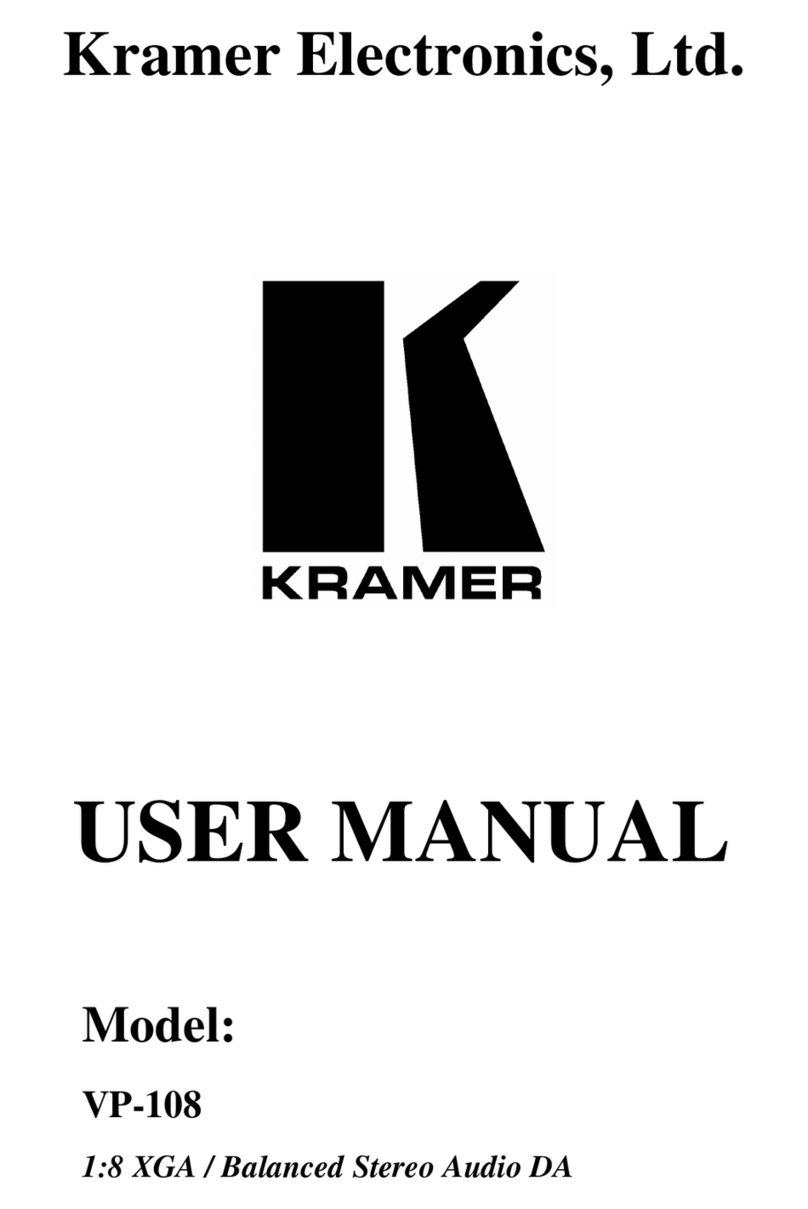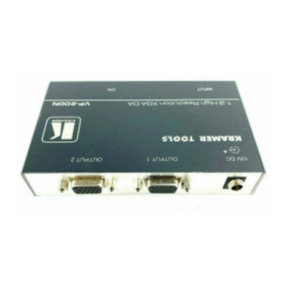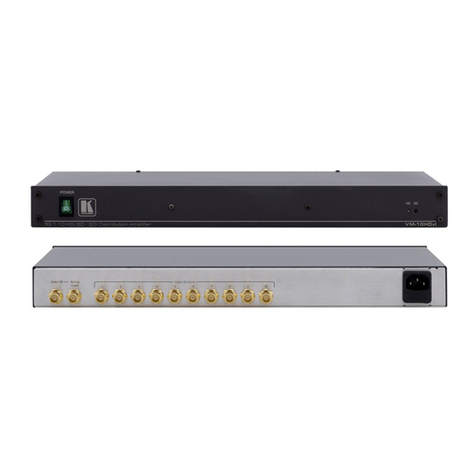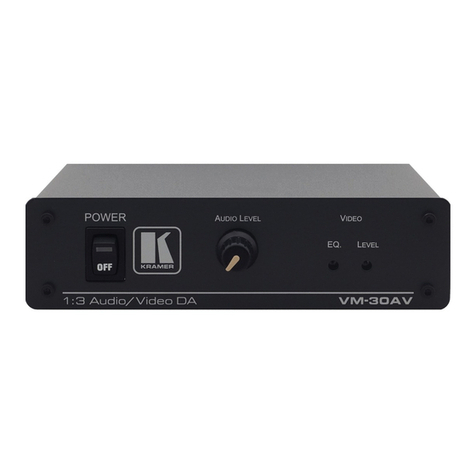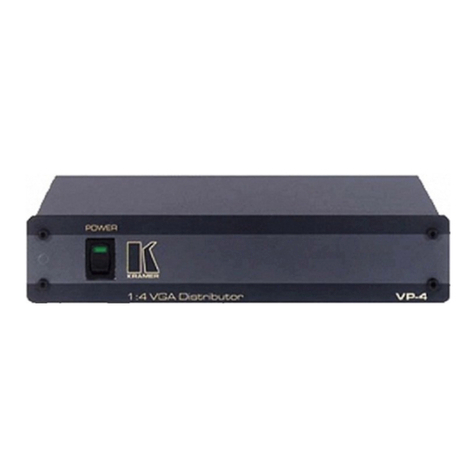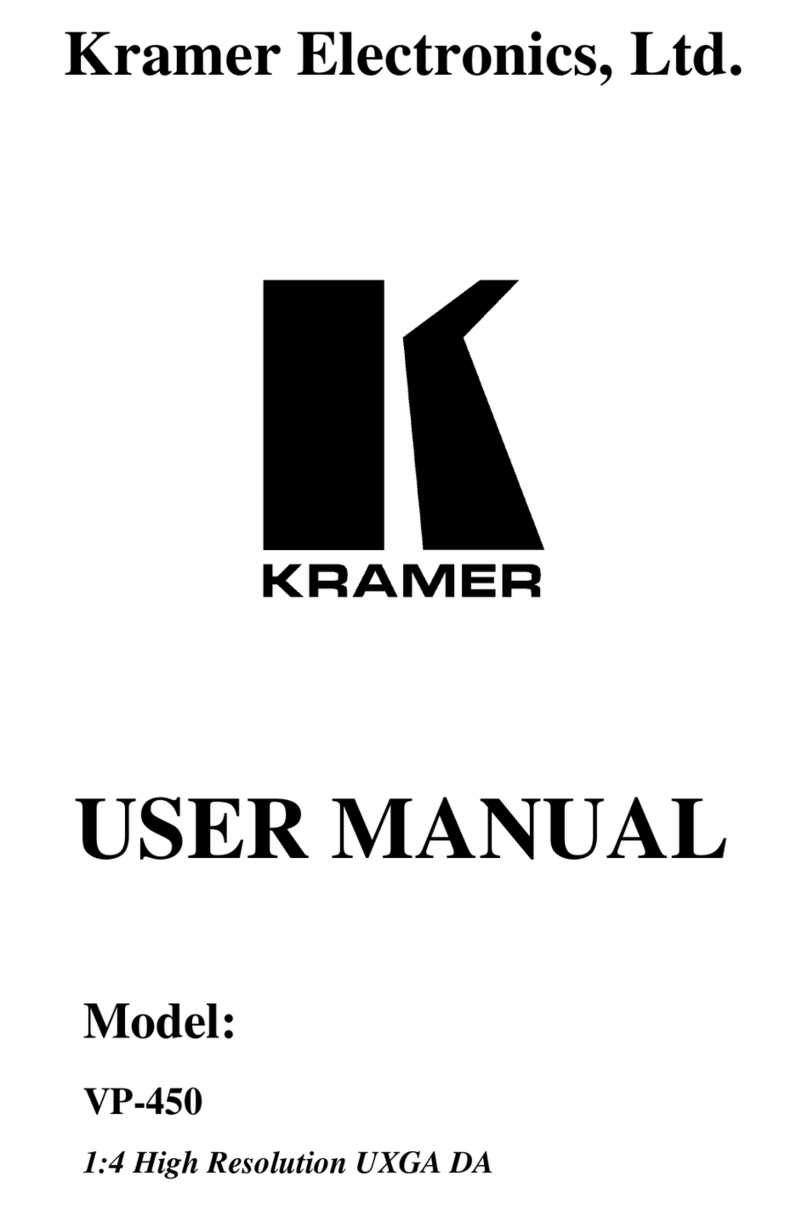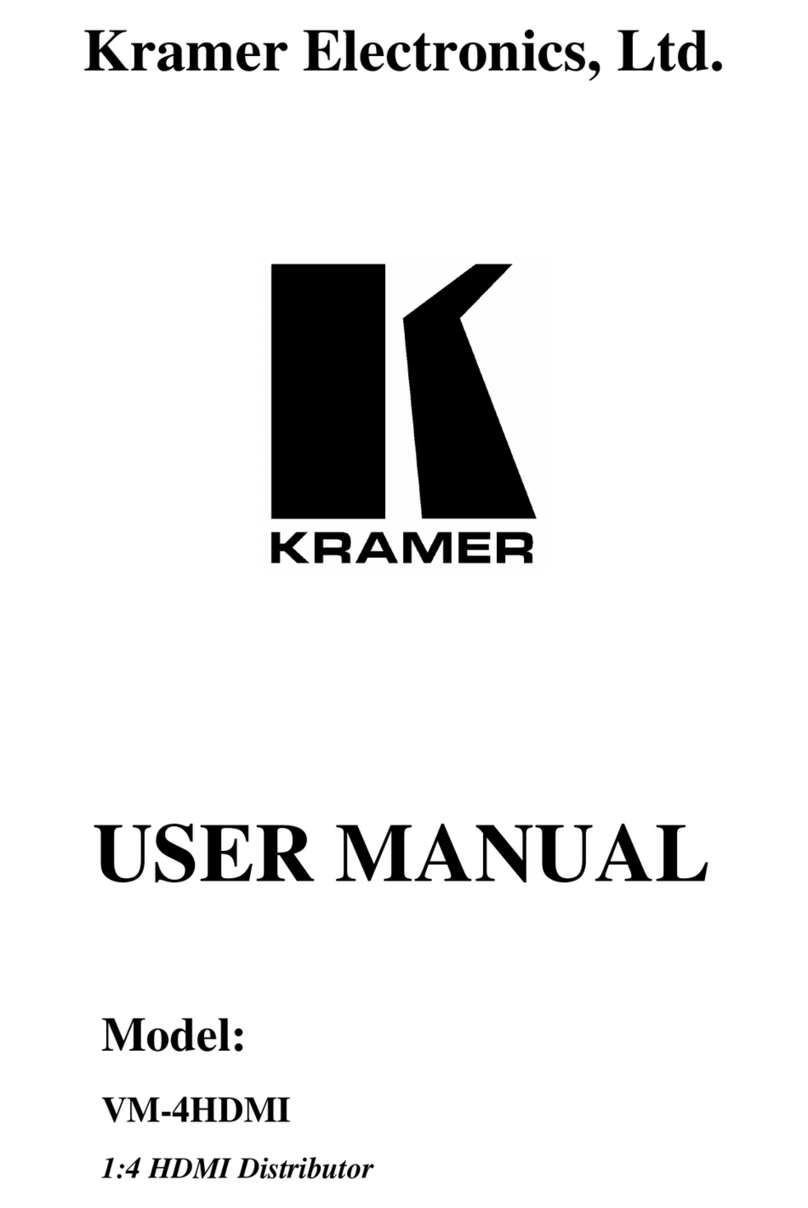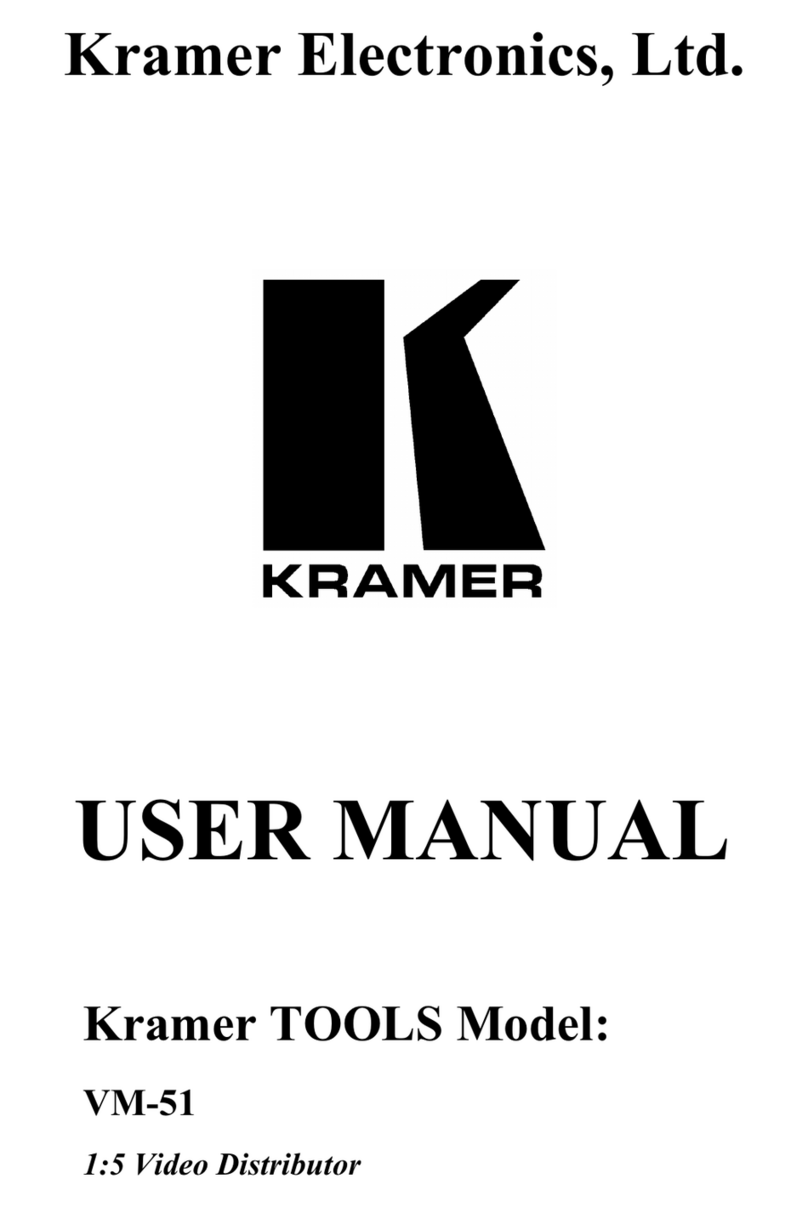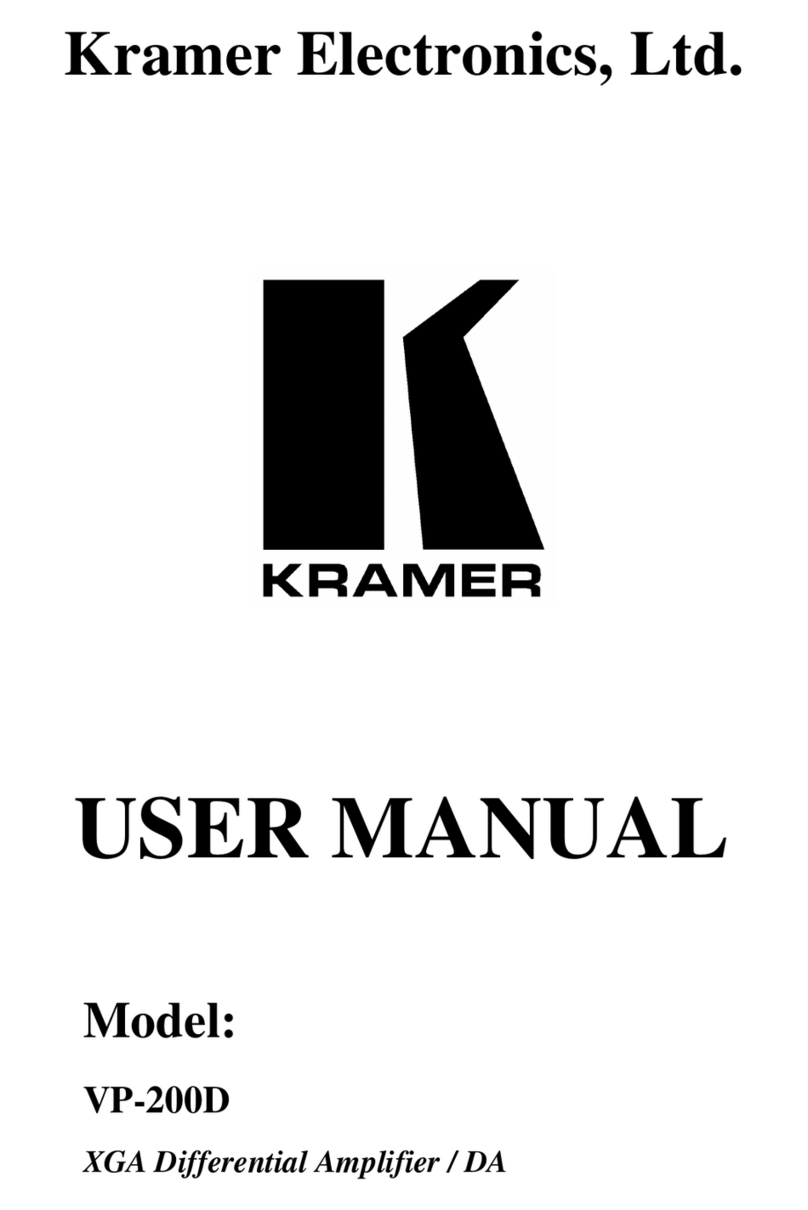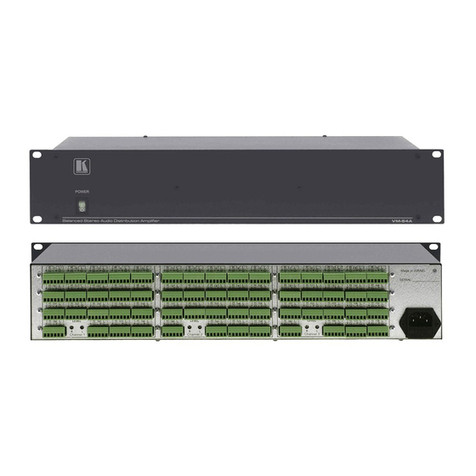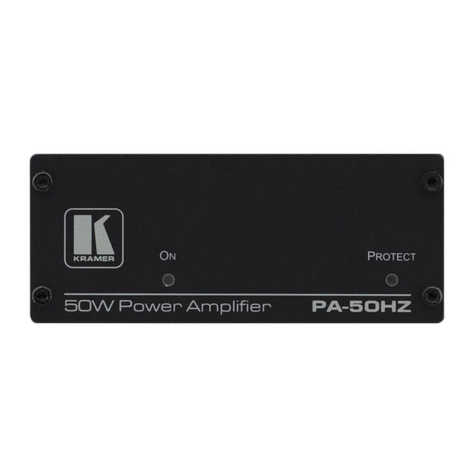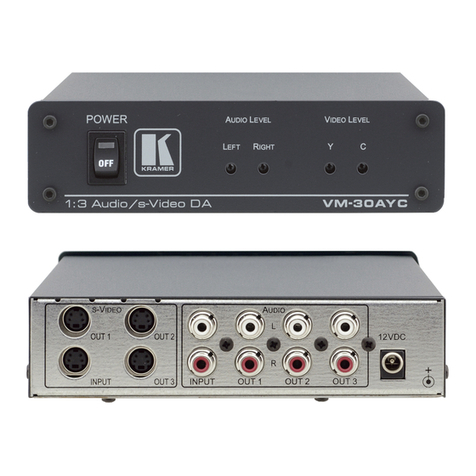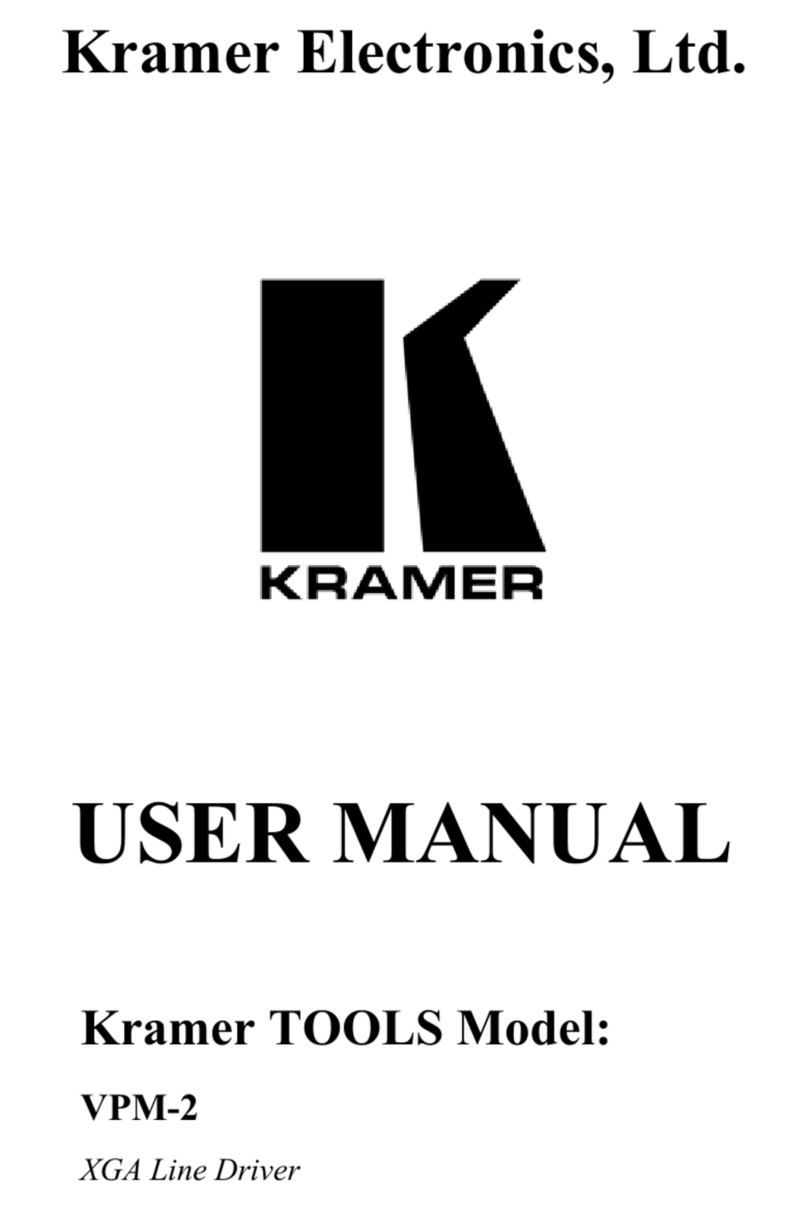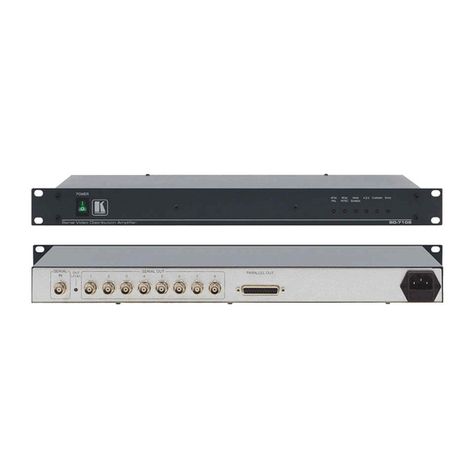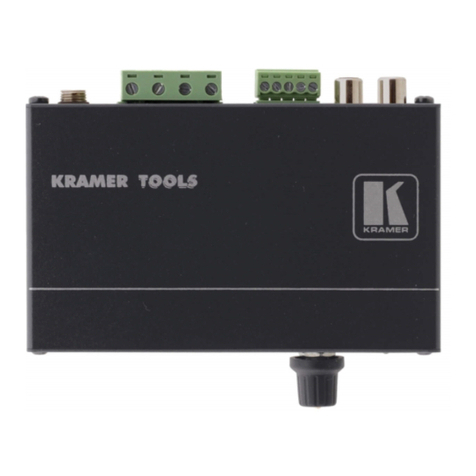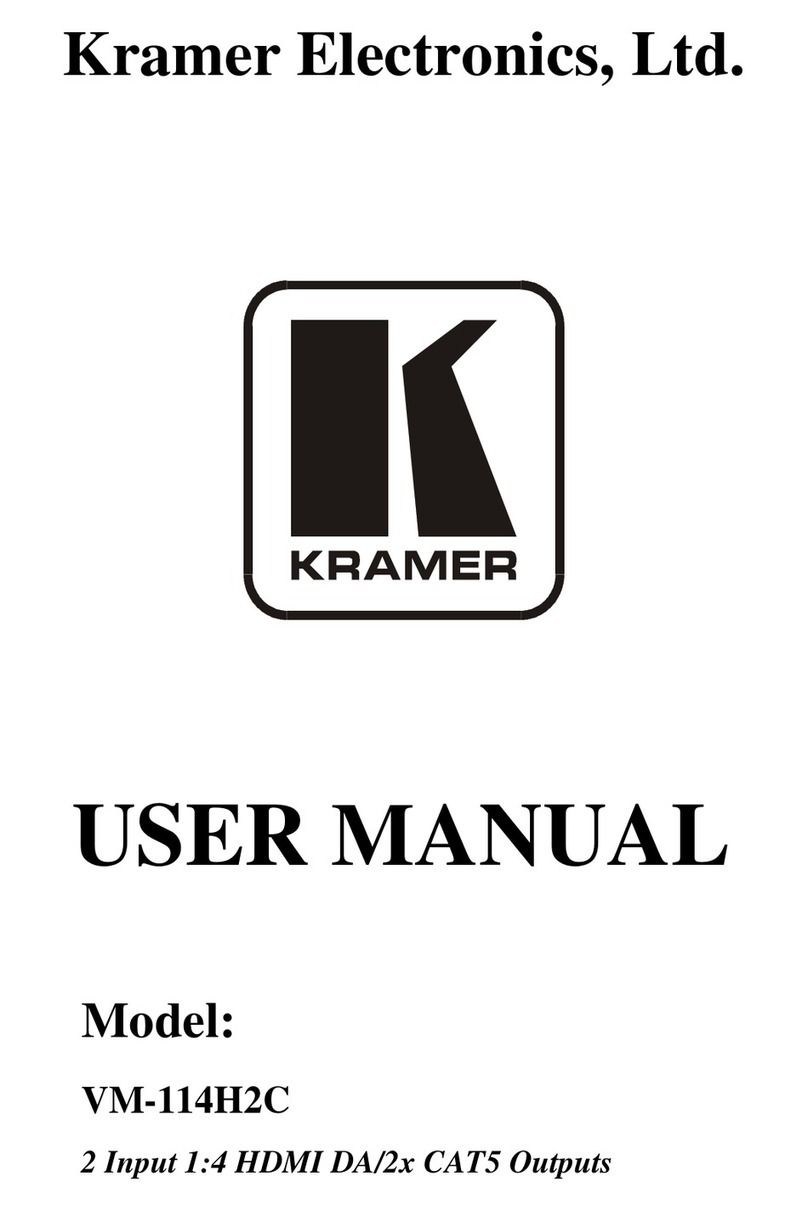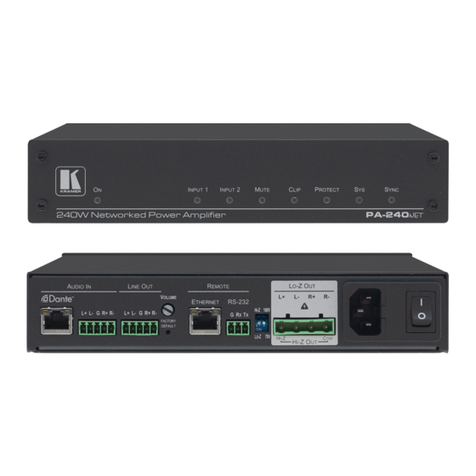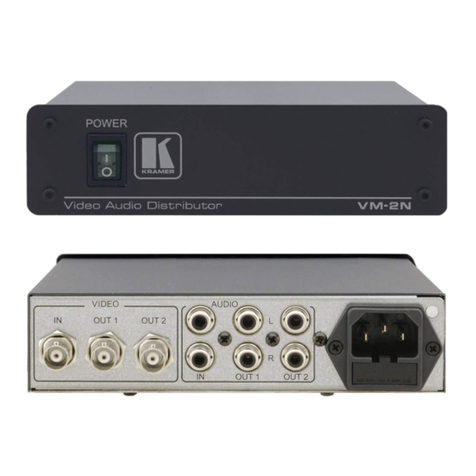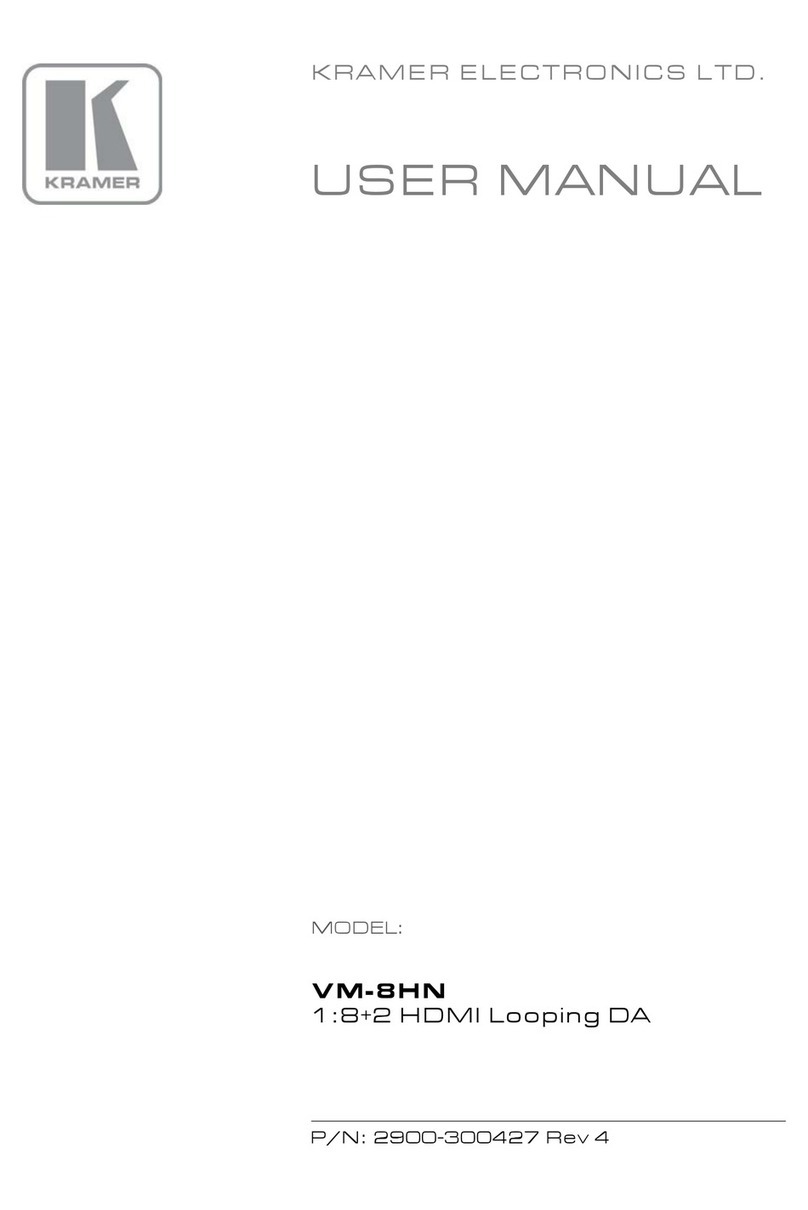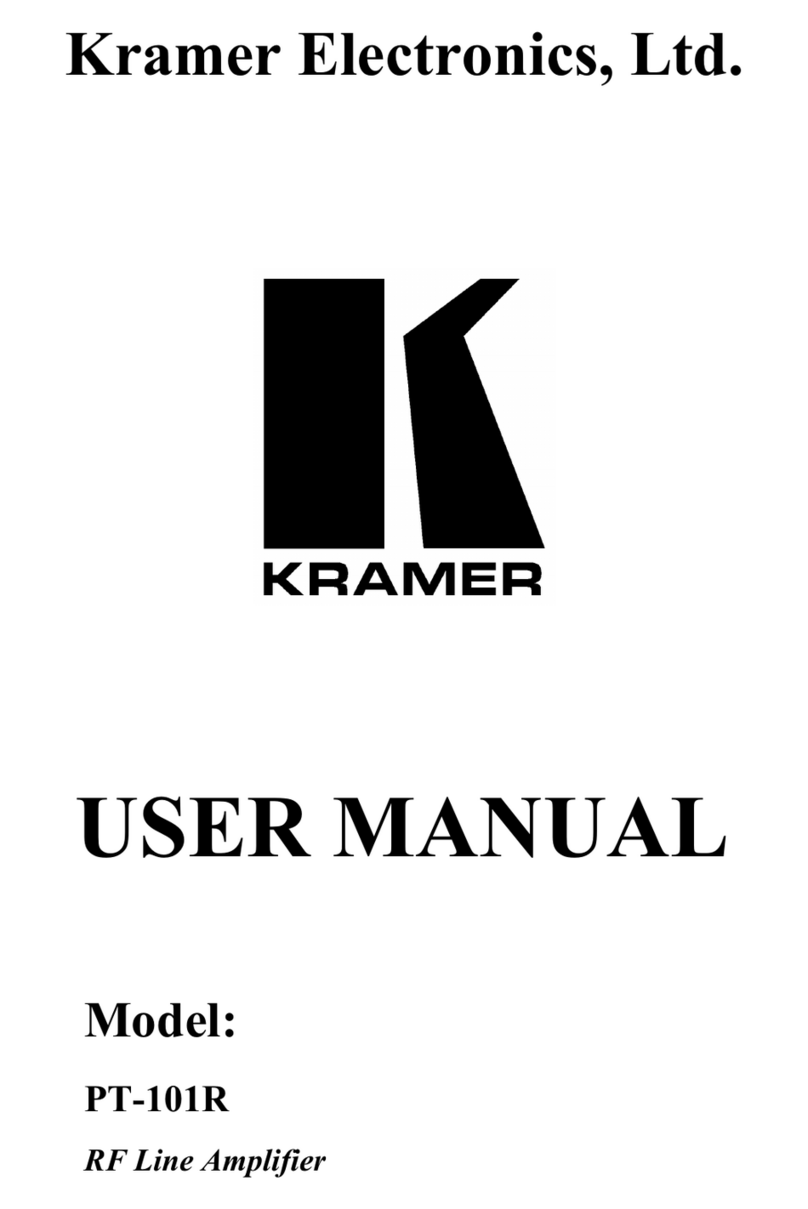
KRAMER ELECTRONICS LTD.
1
1. INTRODUCTION
Congratulations on your purchase of this Kramer Electronics amplifier. Since 1981 Kramer has
been dedicated to the development and manufacture of high quality video/audio equipment.
The Kramer line has become an integral part of many of the best production and presentation
facilities around the world. In recent years, Kramer has redesigned and upgraded most of the
line, making the best even better. Kramer’s line of professional video/audio electronics is one of
the most versatile and complete available, and is a true leader in terms of quality, workmanship,
price/performance ratio and innovation. In addition to the Kramer line of high quality amplifiers,
such as the one you have just purchased, Kramer also offers a full line of high quality switchers,
processors, interfaces, controllers and computer-related products. This manual includes
configuration, operation and option information for the following products from the Kramer VM
line of distribution amplifiers. All these VM amplifiers are similar in operation and features.
VM-2N- 1:2 Video/Audio Distributor
VM-5S- 1:5 Video/Audio Distributor
VM-50A- 1:5 Audio Distributor
VM-50H- 1:5 Headphone Distributor
VM-50V- 1:5 Video Distributor
VM-50YC-1:5 s-Video Distributor
1.1 A Word On Distribution Amplifiers
Distribution amplifiers are used to distribute one source to several acceptors for simultaneous
recording or monitoring of one source, with no discernible signal degradation. They vary in the
number of inputs, looping capability, programming capability, number of outputs, operating
format, bandwidth and input/output coupling. A good quality distribution amplifier amplifies
the incoming signal, pre-compensates the signal for potential losses (resulting from the use of
long cables, noisy source, etc.) and generates several identical buffered and amplified outputs.
1.2 Factors Affecting Quality of Results
There are many factors affecting the quality of results when signals are transmitted from a
source to an acceptor:
Connection cables - Low quality cables are susceptible to interference, they degrade signal
quality due to poor matching and cause elevated noise levels. They should therefore be of the
best quality.
Sockets and connectors of the sources and acceptors - So often ignored, they should be of
highest quality, since "Zero Ohm" connection resistance is the target. Sockets and connectors
also must match the required impedance (75 ohms in video). Cheap, low quality connectors
tend to rust, thus causing flaws in the signal path.
Amplifying circuitry - Must have quality performance when the desired end result is high
linearity, low distortion and low noise operation.
Distance between sources and acceptors - Plays a major role in the final result. For long
distances (over 15 meters) between sources and acceptors, special measures should be taken in
order to avoid cable losses. These include using higher quality cables or adding line amplifiers.
Interference from neighboring electrical appliances - These can have an adverse effect on signal
quality. Balanced audio lines are less prone to interference, but unbalanced audio should be
installed far from any mains power cables, electric motors, transmitters, etc. even when the
cables are shielded.
